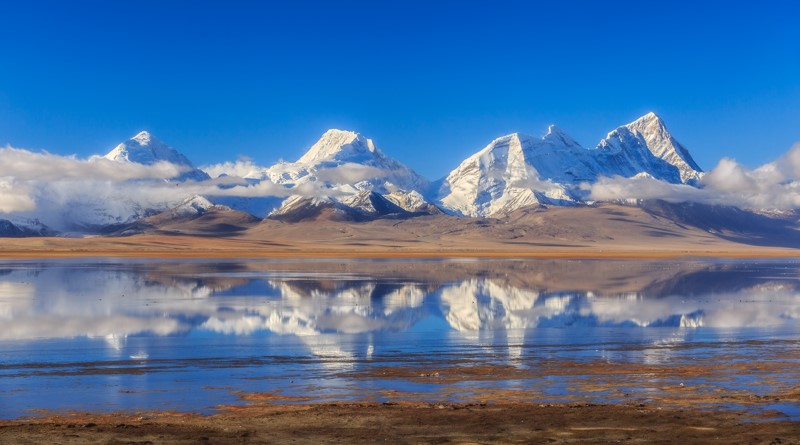Disappearing snow, ice in Hindu Kush Himalayas to hit freshwater supply for billions

A major new assessment report has again warned of changes to the glaciers, snow and permafrost of the Hindu Kush Himalayan (HKH) region driven by global warming, saying these changes are “unprecedented and largely irreversible” and could hit as many as two billion people living in the region hard in coming decades.
The report by Nepal-based International Centre for Integrated Mountain Development (ICIMOD) draws on recent scientific advances to map for the first time the links between the cryosphere, water, biodiversity and society in the region, charting the impacts of rapid changes in glaciers and snow on people and nature.
The report – Water, Ice, Society, and Ecosystems in the Hindu Kush Himalaya (HI-WISE) – finds that glaciers in the HKH could lose up to 80 per cent of their current volume by the end of the century, on current emissions trajectories. Snow cover is projected to fall by up to a quarter under high emissions scenarios – drastically reducing freshwater for major rivers such as the Amu Darya, where it contributes up to 74 per cent of river flow, the Indus (40 per cent) and Helmand (77 per cent). The extent of frozen ground (permafrost) is decreasing, which will leadto more landslides and problems for infrastructure at high elevation, it said.
The Hindu Kush Himalayan region, covering more than 4.2 million km2 , encompasses the highest mountain ranges in the world and contains the largest volume of ice on Earth outside of the polar regions, as well as large expanses of snow. Spanning some 3,500 km in length from Afghanistan in the west to Myanmar in the east, and covering parts or all of Pakistan, India, China, Nepal, Bhutan, and Bangladesh, the HKH is home to unique cultures, highly diverse landscapes, and all of the world’s peaks above 7,000 meters. The region hosts all or parts of four global biodiversity hotspots supporting diverse flora and fauna – the Himalaya, the Indo-Burma, the Mountains of Central Asia, and the Mountains of Southwest China.
The glacier- and snow-covered mountains of the HKH are an important source of water for 12 river basins, including 10 major (transboundary) rivers – the Amu Darya, Brahmaputra (Yarlung Tsangpo), Ganges, Indus, Irrawaddy, Mekong (Lancang), Salween (Nu), Tarim, Yangtse (Jinsha), and Yellow (Huang He) – that flow through 16 countries in Asia and provide freshwater services to 240 million people living in the HKH region and 1.65 billion downstream.
Ice and snow in the Hindu Kush Himalaya are an important source of water for 12 rivers that flow through 16 countries in Asia, providing freshwater and other vital ecosystem services to 240 million people in the mountains and a further 1.65 billion downstream.
The HKH cryosphere (glaciers, snow, permafrost) is undergoing unprecedented and largely irreversible changes over human timescales, primarily driven by climate change. The impacts are becoming increasingly clear, with increased warming at higher elevations, the accelerated melting of glaciers, increasing permafrost thaw, declining snow cover, and more erratic snowfall patterns. The “water towers” of the HKH, critical for downstream regions, are some of the most vulnerable to these changes in the world
The report warns that communities and governments need urgent support and finance to prepare for the accelerated impacts on societies and nature that cryosphere changes will cause as temperatures rise, with current funding flows to the region woefully insufficient to the scale of the challenges the region will face. Scientists predict devastating consequences for water and food security, energy sources, ecosystems, and the lives and livelihoods of hundreds of millions of people across Asia, many of which will be beyond the limits of adaptation.
“Climate scientists are reeling from observations in the Arctic and the anomalies we are seeing elsewhere in the cryosphere. The glaciers of the Hindu Kush Himalaya are a major component of the Earth system. With two billion people in Asia reliant on the water that glaciers and snow here hold, the consequences of losing this cryosphere are too vast to contemplate. We need leaders to act now to prevent catastrophe”, said ICIMOD Deputy Director General Izabella Koziell said.
“There is still time to save this critical region, but only if fast and deep emissions cuts start now. Every increment of a degree of warming matters to glaciers here and to the hundreds of millions of people that depend on them. As this study shows, alongside urgent mitigation action, we need adaptation funds and programmes and ecosystem restoration to be rapidly scaled up, and the mobilisation of finance for losses and damages”, said Koziell.
The report noted that with accelerated glacier melt, ‘peak water’ will be reached around mid-century in most HKH river basins, and overall water availability is expected to decrease by the end of the century. With a changing climate and heightened awareness of the increased exposure of livelihoods and infrastructure to hazards, the mountain hazard landscape has become increasingly multidimensional.
“Water sources in the high mountains are important not only for livelihoods and other demands in the immediate vicinity but also for the distant downstream areas that are heavily reliant on meltwater originating from mountains for agricultural, domestic, and industrial uses. Glacier and snowmelt provide a buffer for downstream irrigation demand in the spring season (high confidence), and it is very likely that the dependency on them will increase in future”, the report added.
Floods and landslides are projected to increase over the coming decades, with slow-onset hazards, such as sedimentation and erosion and fast-onset hazards such as glacial lake outburst floods (GLOFs), occurring often concurrently in the same catchments. 200 glacier lakes across the HKH are deemed dangerous, and the region could see a significant spike in GLOF risk by the end of the century. Coupled with increased population growth and economic activity in the region, the exposure to these hazards poses the risk of increased loss and damage, including population displacement, the report said.



